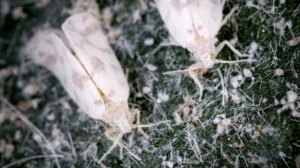It’s a hot summer day, and you’re enjoying a walk through the park when suddenly, you feel a sharp, burning sensation on your ankle. Congratulations, you’ve just had a close encounter with a fire ant!
These fiery little creatures have a reputation that precedes them, but what do we really know about them? Let’s explore the intriguing world of fire ants.
Meet the Fire Ant: A Quick Biology Lesson
Fire ants aren’t just one species; they represent over 200 species worldwide. They’re usually reddish-brown and, yes, they sting – hence their name.
What makes their sting so painful? It’s all down to the venom, which causes a burning sensation, and in some cases, white pustules that can last for several days.
A Colony’s Life
A fire ant colony is a complex, highly organized community. Here’s how it breaks down:
- Queens: The rulers of the roost, laying thousands of eggs.
- Workers: The diligent ants that make the colony tick.
- Soldiers: The defenders, with larger jaws for protection.
Diet and Dwelling
These ants are omnivores, and their diet includes seeds, insects, and even small animals. They’re attracted to fatty and sugary foods, so keep your picnics sealed tight!
As for where they live, fire ants prefer sunny, open areas, building distinctive mounds that can reach up to 18 inches in height.
Reproduction and Aggression
The queens can live for several years, whereas worker ants live for mere weeks. Fire ants mate during flights, usually occurring in spring or early summer.
If there’s one thing you should know about fire ants, it’s that they can be quite aggressive, especially if they feel their nest is threatened. They attack in numbers and aren’t afraid to sting repeatedly.
The Impact of Fire Ants
These ants are more than a painful nuisance. They can disrupt ecosystems and even damage agriculture and electrical equipment.
So, What Can You Do?
Understanding fire ants is the first step towards coexisting with them. If you stumble upon a nest, it’s best to steer clear. If they’ve taken a liking to your property, professional pest control services like TORO Pest Management are usually the best way to handle the problem.
Conclusion
Fire ants are fascinating creatures, but their stings are anything but pleasant. By understanding their biology and behavior, we can learn to respect them from a safe distance and appreciate their role in the ecosystem.
So next time you spot that distinctive mound, give it a wide berth, and tip your hat to one of nature’s most intriguing yet intimidating insects!









